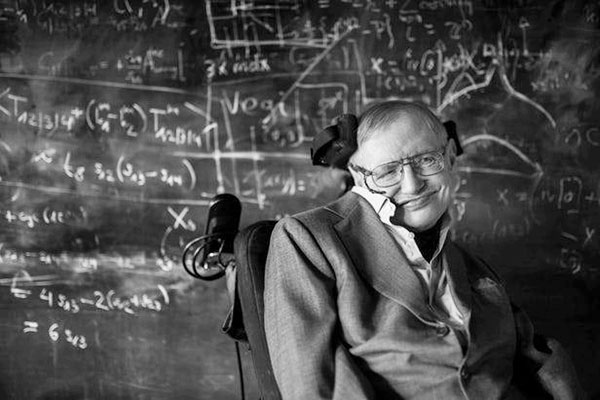|

by Tyler Durden
May 07, 2018
from
ZeroHedge Website

Before he passed
away in March, renowned physicist Stephen Hawking had
published more
than 230 articles on,
But,
ten days before his death, Hawking finished his final theory on the
origin of the universe (A
Smooth Exit from Eternal Inflation?)
- now published posthumously -
and it offers an interesting departure from earlier ideas about the
nature of
the "multiverse."
As PBS
reports, the new
report, co-authored by Belgian physicist Thomas Hertog, counters the
longstanding idea that the universe will expand for eternity.
If you asked an astrophysicist
today to describe what happened after
the Big Bang, he would
likely start with the concept of "cosmic inflation."
Cosmic inflation argues
that right after the Big Bang - we're talking after a teeny
fraction of a second - the universe expanded at breakneck speed
like dough in an oven.
But this exponential expansion
should create, due to quantum mechanics, regions where the
universe continues to grow forever and regions where that growth
stalls.
The result
would be a multiverse, a collection of bubblelike pockets, each
defined by its own laws of physics.
"The local laws
of physics and chemistry can differ from one pocket universe to
another, which together would form a multiverse," Hertog said
in a
statement.
"But I have never been a fan of the multiverse. If the scale of
different universes in the multiverse is large or infinite the
theory can't be tested."
Along with
being difficult to support, the
multiverse theory, which was co-developed
by Hawking in 1983, doesn't jibe with classical physics,
namely the contributions of Einstein's theory of
general relativity as they relate to the structure and dynamics
of the universe.
"As a
consequence, Einstein's theory breaks down in eternal
inflation," Hertog said.
Einstein spent
his life searching for a unified theory, a way to reconcile the
biggest and smallest of things, general relativity and
quantum
mechanics.
He died never
having achieved that goal, but leagues of physicists like Hawking
followed in Einstein's footsteps.
One path led to holograms.

Diagram of
evolution of the (observable part) of the
universe from the Big Bang (left) to the
present.
After the Big
Bang and inflation, the expansion of the
universe gradually slowed down for the next
several billion years, as the matter in the
universe pulled on itself via gravity.
More recently,
the expansion has begun to speed up again as
the repulsive effects of dark energy have
come to dominate the expansion of the
universe.
Image and caption by NASA
Instead of the 'standard' description
of how the 'universe' unfolded (and is unfolding), the authors argue
the Big Bang had a finite boundary, defined by string theory and
holograms.
The new theory
- which sounds simplistically like the world of the
red-pill-blue-pill Matrix movies - embraces the strange concept
that the universe is like a
vast and
complex hologram.
In other words,
3D reality is an illusion, and that the apparently "solid"
world around us - and the dimension of time - is projected from
information stored on a flat 2D surface.
The Telegraph
reports
that Prof Hertog, from the Katholieke Universiteit Leuven
(KT Leuven), said:
"It's
a very precise mathematical notion of holography that has come
out of string theory in the last few years which is not fully
understood but is mind-boggling and changes the scene
completely."
Applied to
inflation, the newly published theory suggests that
time
and "the beginning" of the universe arose holographically from
an
unknowable state outside the Big Bang...

Prof Hawking said
before his death:
"We are not down to a single,
unique universe, but our findings imply a significant reduction
of the multiverse, to a much smaller range of possible
universes."
And believe it or
not,
there's actually
evidence that the world works this way.
As PBS
concludes,
some physicists point out that the Hawking-Hertog theory is
preliminary and should be considered speculation until
other mathematicians can replicate its equations.
Sabine
Hossenfelder, a theoretical physicist with the Frankfurt
Institute for Advanced Studies, said on
her blog that the ideas put forward in this paper join others
that are currently pure speculation and don't yet have any evidence
to support them.
She makes it clear
that while the proposals aren't uninteresting, Hawking and Hertog
haven't found a new way to detect the existence of universes other
than our own.
"Stephen Hawking was beloved by everyone I know, both inside and
outside the scientific community," she wrote.
"He was a great man without doubt, but this paper is utterly
unremarkable."

Here is
Ars Technica's John Timmer
with more details on the holographic universe.
| 




